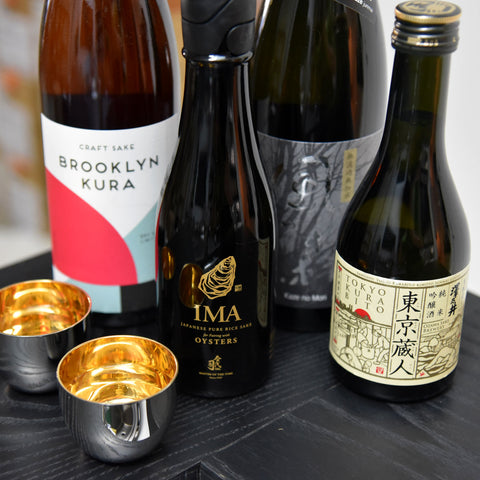
When the coronovirus hit, it was winter 2020. In the sake world, rice is already planted and harvested by the time winter rolls around. The last step is to use all of that rice for sake-making. But with the coronovirus, orders for sake virtually stopped with restaurants and bars closing, as well as matsuris (festivals) being cancelled all over Japan.
What to do with all this rice that is usually used for one purpose only – making sake?
Sake rice is comprised of an especially large starchy core, conducive to being converted into sugars, which then turn into alcohol. As compared to Japanese eating rice, there are less proteins and fats on the outside that lend flavor to each grain. Therefore, sake rice, is very good for making sake, but not great for eating as there's less flavor. It's just very starchy.
Some sake breweries got creative and wanted to help out the rice farmers that were stuck with a lot of rice crop with no one to sell to. The breweries bought the sake rice anyway and packaged it as rice to eat at home. But because sake rice is so different in composition from table rice, they suggested specific recipes appropriate to the sake rice.
After eating this sake rice a few times, I began to understand and appreciate its characteristics. Although, this rice isn't particularly flavorful, it maintains a firm structure even when cooked for a long time. I steamed the rice using a recipe integrating corn and butter recommended by Dassai. It was pretty good, but I wanted to find a recipe that really highlighted the texture of the rice and came up with this Kinoko Risotto recipe:
INGREDIENTS
4 servings
1 U.S. cup washed Dassai Yamada Nishiki Sake Rice
4.5 oz of mushrooms (I used 1.5 oz each of shiitake, maitake, and cremini)
2 cloves minced garlic
1 shallot, minced
3 cups dashi
1 tbsp minced sage
5 tbsp salted butter
1 tbsp Shio Koji
0.5 cup grated parmesan cheese
4 tsp Kurosu Rinkosan Uchibori Black Vinegar
2 tbsp minced chives
METHOD
1. Melt 3 tbsp of butter on medium-high in a large pan. Once melted, add garlic, shallot, rice and mushrooms and sauté for 2-3 minutes or until ingredients become fragrant and lightly brown.

2. Add 2.5 cups of warm dashi. Stir constantly for 8 minutes so the rice doesn't stick to the bottom of the pan. Taste for a firm core.

3. Meanwhile, soak minced sage in 0.5 cup of dashi and 1 tbsp shio koji. Add to pan (after step 2) and cook for 3-5 minutes. Taste for a touch before al dente texture.

4. Take the pan off the heat and add the remaining butter in 1 tbsp chunks. Stir to melt butter.

5. Add the cheese one handful at a time to your liking.

6. Add the vinegar and mix in the chives.


6. Serve with a junmai sake!

As someone who is so used to eating regular table rice, dialing in a recipe that brought out the best in this sake rice was a challenge. But I can now confidently use this sake rice in a meal. And hopefully with each purchase of this sake rice, we are helping the rice farmers out in Japan!




Comments (0)
There are no comments for this article. Be the first one to leave a message!